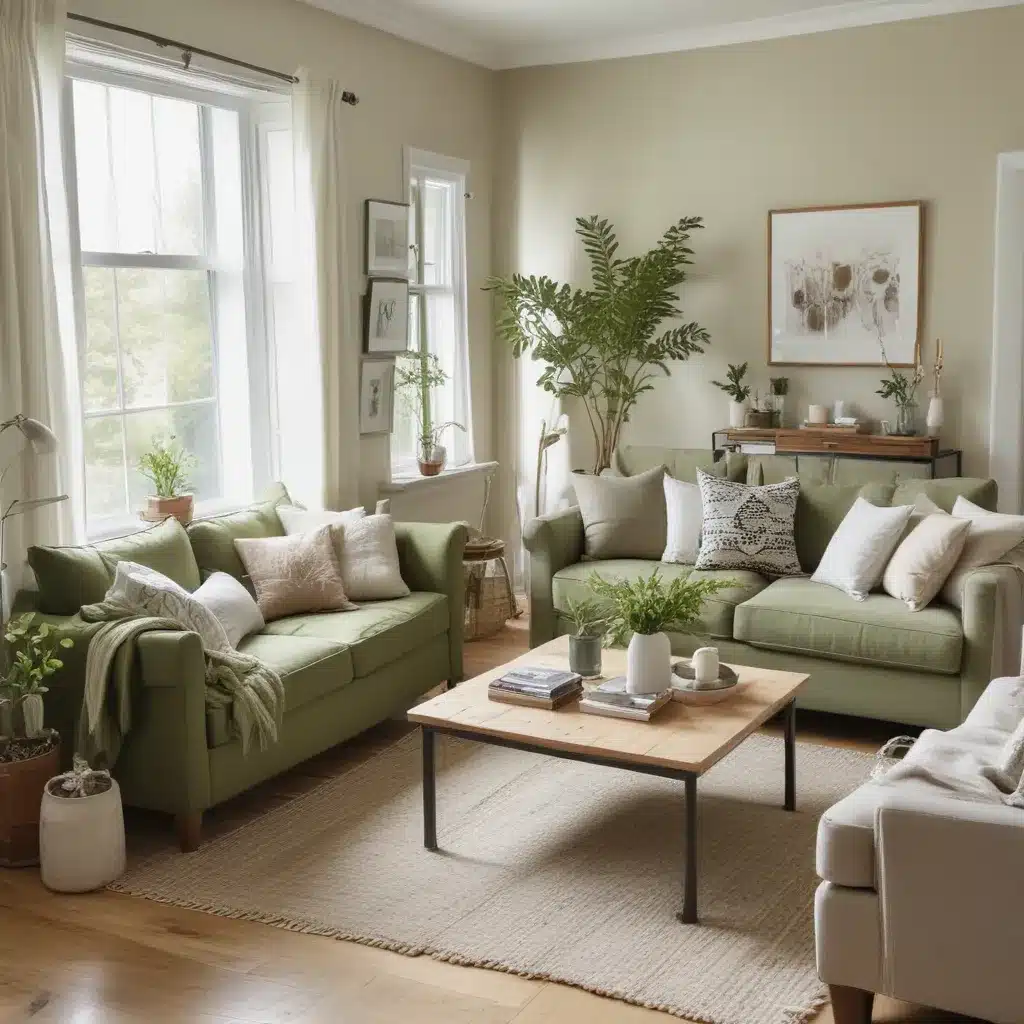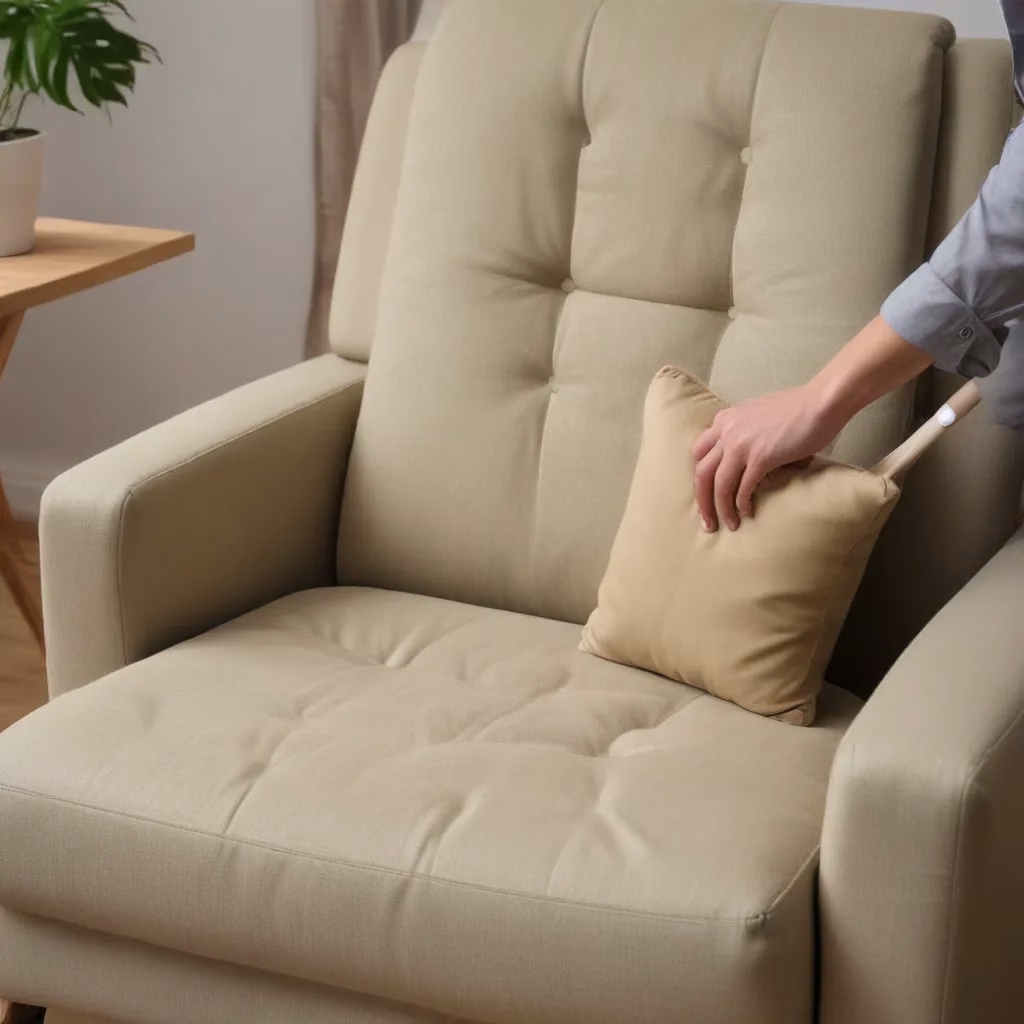Introduction: The Power of Small Sustainable Swaps
Sustainability – it’s a buzzword that’s been floating around for years, but for many of us, it can still feel like an unattainable goal. Images of solar panels, electric vehicles, and zero-waste homes may come to mind, leaving us wondering, “How on earth can I make my living space more eco-friendly?”
Well, my friends, I’m here to let you in on a little secret: the path to a greener home doesn’t have to be paved with grand, expensive gestures. In fact, the most impactful changes often start with the simplest of swaps – the kind that you can implement in your kitchen, your living room, or even your laundry room, without breaking the bank or dramatically altering your lifestyle.
Sofa Spectacular, a custom sofa company in the UK, understands that sustainability should be accessible to all. That’s why they’ve asked me to share some of the easiest, most impactful swaps you can make to reduce your environmental footprint and create a more eco-friendly living space. So, let’s dive in and discover how small changes can lead to big impact!
Ditch the Paper Towels, Embrace Reusable Cloths
One of the first steps I took on my journey towards a more sustainable kitchen was ditching the paper towels in favor of reusable cloths. I know, I know – it’s not the most revolutionary idea, but bear with me. Those flimsy, one-use paper towels may seem convenient, but they come at a significant cost to the environment.
According to The Homestead Challenge, the production of paper towels uses far more water and resources than simply washing a few reusable cloths. Plus, let’s not forget about the carbon emissions associated with the transportation of those paper towels to your local store and then to your home.
So, what’s the solution? Invest in a set of sturdy, reusable cloths that you can simply toss in the washing machine when they need a refresh. I love the ones that snap together and fit right on my paper towel holder – it makes the transition seamless. And let me tell you, these cloths have been a lifesaver, even when it comes to cleaning up after my little ones. No more guilty feelings about wasting paper towels, just a clean, sustainable way to keep my kitchen spick and span.
Ditch the Plastic, Embrace Glass and Silicone
Moving on from the kitchen towels, let’s talk about another area where we can make a big impact: food storage. Over the past several years, I’ve made a conscious effort to reduce the amount of plastic in my kitchen, and let me tell you, it’s been a game-changer.
As The Homestead Challenge points out, I’m not against plastic altogether, but I’m not a fan of heating it up, as that’s when it’s most likely to leach harmful chemicals. So, I’ve slowly been replacing my plastic containers with glass alternatives, and let me tell you, they’re so much easier to clean and maintain.
But it’s not just glass – I’ve also discovered the wonders of silicone Stasher bags. These reusable pouches have become a staple in my kitchen, not just for storing snacks on the go, but also for freezing foods. It’s amazing how much you can fit in these little bags, and the fact that they’re endlessly reusable is just the icing on the cake.
And let’s not forget about those pesky plastic bags. I used to go through them like there was no tomorrow, but now I’ve swapped them for beeswax wrap and silicone lids. Not only do these alternatives look way more stylish on my countertops, but they also help reduce my plastic waste significantly.
Ditch the Chemicals, Embrace Homemade Cleaning Solutions
Next up on the sustainability swap list: household cleaners. Now, I know what you’re thinking – “But Brittany, those conventional cleaners are so effective! How can I possibly give them up?” Well, my friends, let me tell you, there’s a whole world of eco-friendly, homemade cleaning solutions just waiting to be discovered.
As The Homestead Challenge suggests, most of us are already aware that conventional household cleaners are bad for us and the environment, yet we still choose to use them. But it doesn’t have to be that way! With a few simple ingredients, you can create your own counter sprays, window cleaners, and even laundry detergent that are just as effective, if not more so, than their store-bought counterparts.
Now, I’ll admit, I don’t make every single cleaning product in my home from scratch – that would be a bit too much for me. But I do make my own counter spray, and it’s seriously simple. Plus, by using refillable bottles, I’m reducing my plastic waste even further. For the areas where I’m not quite ready to DIY, I opt for more sustainable brands like Dropps, which offers laundry and dish detergent pods in minimal packaging.
Ditch the Disposables, Embrace Reusable Alternatives
As we continue our journey towards a greener living space, let’s talk about another area where we can make a big impact: the dreaded disposables. From single-use plastic bottles to aluminum foil, these items may seem convenient, but they come at a heavy cost to the environment.
According to The Homestead Challenge, every single-use item we toss in the trash is contributing to the growing problem of plastic pollution and waste. But the good news is, there are plenty of reusable alternatives that can help us break free from this disposable mindset.
For instance, instead of reaching for that plastic water bottle, I’ve invested in a stylish, reusable water bottle that I can refill from my Sofa Spectacular water filter. And when it comes to baking, I’ve swapped out aluminum foil for silicone baking mats and cups – not only are they better for the environment, but they’re also a breeze to clean.
It’s all about making small, conscious choices that add up to big impact over time. Sure, it may take a little bit of effort to remember your reusable containers or water bottle, but trust me, it’s worth it. After all, the health of our planet depends on each of us doing our part.
Cooking for Climate: Swaps that Reduce Your Carbon Footprint
Now that we’ve covered some of the basic sustainable swaps in the kitchen, let’s dive a little deeper into the world of food and its impact on the environment. According to Bloomberg, food systems are responsible for a staggering 30% of human-caused emissions, with nearly 60% of that coming from animal products.
Now, I know what you might be thinking – “But I love my steak and burgers! How can I possibly give those up?” Well, the good news is, you don’t have to. The key is to focus on making small, sustainable swaps that can have a big impact on your carbon footprint.
For example, the next time you’re out for lunch, try playing a little game. Without looking it up, can you find the most and least climate-friendly options on the menu? It’s a fun way to start raising your awareness and making mindful choices.
And let’s not forget about the power of portion control. According to Bloomberg, replacing beef with a different protein – even for just one meal – can cut the emissions footprint of a person’s diet that day by as much as half. So, instead of that hefty steak, why not try a delicious vegetarian dish or a smaller serving of a leaner protein?
These small changes may not seem like much, but when we all start making more eco-conscious decisions about the food we eat, the collective impact can be truly remarkable.
The Kitchen: The Heart of a Sustainable Home
As we wrap up our journey through the world of sustainable swaps, I want to leave you with one final thought: the kitchen is the heart of the home, and it’s the perfect place to start making a difference.
The Homestead Challenge eloquently states, “It’s become a hot topic to talk about zero-waste living, but it’s more than just a trend. It’s about making simple changes that lead to a more eco-friendly lifestyle.” And what better place to start than in the very room where we spend so much of our time preparing, cooking, and sharing meals?
From ditching the paper towels to embracing reusable food storage, each small swap you make in your kitchen has the power to contribute to a more sustainable future. And the best part? You don’t have to do it all at once. Start with one change, and then build on it, slowly but surely.
Remember, sustainable living is a marathon, not a sprint. So, take a deep breath, get creative, and have fun with it! Who knows, you might just discover that making your living space more eco-friendly is a lot easier – and more rewarding – than you ever imagined.
So, what sustainable swap will you make today? I challenge you to take that first step, and I promise, the impact you can have will be anything but small.




